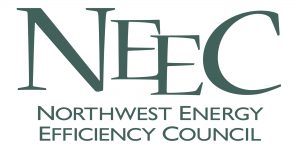The Washington State Legislature is moving closer to adjournment and energy bills during the session largely produced more smoke than fire. 2012 was touted as "the year" for changes to Washington’s Energy Independence Act (I-937), but once again political divisions between stakeholder groups proved too large. A fresh legislative face was inserted this year as Rep. Dave Upthegrove (Chair of the House Environment Committee) accepted the challenge of crafting a bill that could muster majority support. After a summer of immersion in I-937 issues, his bill language met almost universal opposition when heard in both the House and the Senate. A last minute attempt by the Governor’s office to find the right alchemy suffered a similar fate. At this point, two small changes to the statute still have life. S5575 would amend the Act to allow certain biomass facilities to be listed as qualifying facilities under the renewable portfolio standard section of the statute. Advocates for this change have long argued that some existing biomass facilities were improperly left out of the Act’s language on renewable energy. In addition, S6414 would empower the Washington State University Extension Energy Program to make an advisory determination, when requested by a public utility, on whether a proposed electric generation or conservation resource project qualified under the Act. While legislative leaders have pledged to continue to work on I-937 over the summer, it is hard to imagine a path that could be successful in 2013. It could be that Washington has what it is has.
The potentially bigger legislative news for energy efficiency in the Washington Legislature is a bill titled "Jobs Now." (Actually, there are about 3 separate bills that combine to make this happen.) With doggedly high unemployment rates, especially in the construction industry, legislative champions – led by Rep. Hans Dunshee – want to invest in significant public infrastructure projects paid for by state bonds. The debt service on the bonds would be covered by existing annual revenues tied to fees associated with toxic controls and other environmental remediation efforts. In effect, the bill would fast forward long term planned infrastructure investments for a concentrated near term effort to create jobs through infrastructure improvement. In the House version of this legislation, public sector energy efficiency investments would be targeted for some of the funds. The Senate version of the idea has a much smaller commitment to energy efficiency. Whether Jobs Now gets through the Olympia wickets is now anyone’s guess as is whether or not energy efficiency plays an ultimate part in the infrastructure spending. Click here for a media overview of the situation.
